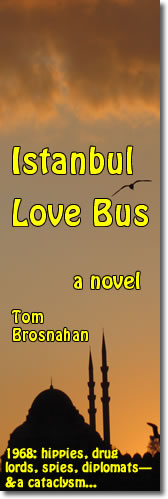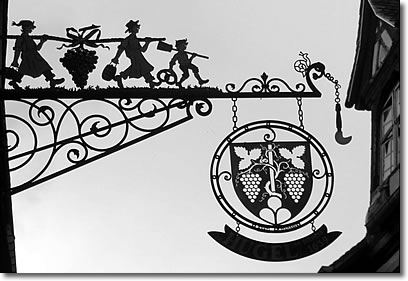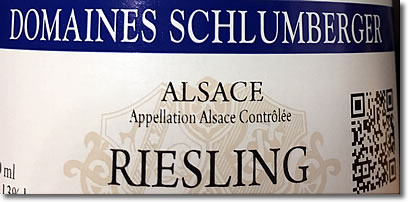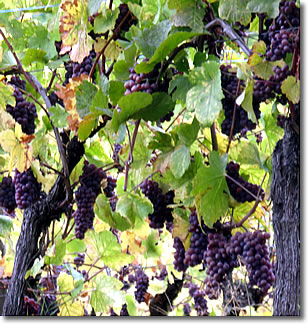 |
The Wines of Alsace, France | |
| Though not as well known as the great wines of Burgundy and Bordeaux, Alsatian white wines can be very fine, and are always fun. | ||
|
|
|
The northerly, inland climate of Alsace is particularly suited to producing white wines, as in neighboring Germany. But Alsatian whites are different, tending to be dryer than their sweeter German cousins. Many are delicious, as you will discover. Alsatian Grapes & WinesRieslingElegant, subtle, fresh, and drier than the German wine, Alsatian Riesling has fruity and floral notes, and high acidity. It's among the most popular of Alsatian vintages. Pinot blancLight, delicate and supple, Pinot blanc, a genetic mutation of Pinot noir, is the main ingredient in most Crémants d'Alsace (sparkling wines), but is also used to make a refreshing still white wine. Pinot grisNoble, powerful, well-rounded, with notes of spice, the Alsatian wines made with this popular vinifera grape (also known as Pinot Grigio) are full-bodied. Pinot noirThis noble Burgundian grape is used to make some white wines in Alsace, and also Alsatian red, which is 100% Pinot noir. MuscatThis ancient grape variety comes in a range of colors, and is usually characterized by crisp, aromatic fruit. Alsatian Muscats are balanced between dry and sweet, good with hors d'oeuvres and cheeses. GewurztraminerThese pink-to-red grapes are used to make white wines that are high in natural sugar. They can be complex and aromatic, with a bouquet of lychees. SylvanerLight and slightly fruity, Sylvaner's neutral flavor and high acidity make it ideal for blending with other grapes, although there are some pure Sylvaners, especially as dessert wines. ChasselasProducing full-flavored, dry and fruity white wines, Chasselas is also a popular table grape. Auxerrois blancA sibling of Chardonnay, Auxerrois blanc is usually blended with other varieties, especially Pinot blanc, to make white still wines as well as Crémant d'Alsace.
Special Alsatian WinesThe authenticity of Alsatian wines, and many other products in France, is protected by France's system of Appellation d'origine contrôlée (the European Union's term is Appellation d'origine protégée) whereby producers of wines and other agricultural products from a particular geographical area may label their products as such—and producers of similar products in other regions may not. If the label on your bottle of wine includes Appellation Alsace Contrôlée, AOC Alsace or another of the designations below, it means it was produced in Alsace and meets the standards and qualifications required for that designation.
AOC AlsaceUnlike other French wine regions, Appellation Alsace Contrôlée is used for all Alsatian wines. An Alsatian wine may be further distinguished by the varietal (type of grape) and the place (town or vineyard) where it was produced. So it's easy, in Alsace, to know what will be in your glass: Riesling, Pinot gris, Pinot blanc, Sylvaner, Gewurztraminer, etc. About 74% of the wine made in Alsace is included in this standard. If the AOC grape variety is given, the wine will be made 100% from that grape. (If the "variety" is Edelzwicker, the wine is a blend of grapes—see below.) AOC Alsace Grand CrusFifty-one terroirs (locations or vineyards) in Alsace have been identified as exceptional, and wines from these places made from one of the noble Alsace grape varieties—Riesling, Muscat, Pinot gris, or Gewurztraminer—may be labeled as Alsace Grand Cru. Only 4% of Alsace wines meet this standard. AOC Crémant d'AlsaceAlsatian sparkling wine is delicious, and if it is labeled Appellation Crémant d'Alsace Contrôlée, it is produced by the traditional méthode champenoise—with the second fermentation taking place in the bottle, just as in Champagne. Grapes allowable in this Alsatian appellation are Pinot blanc (most common), Pinot gris, Pinot noir, Riesling and/or Chardonnay. About 22% of Alsatian wine production is crémant. Crémant d'Alsace Rosé is made from Pinot noir grapes. Late Harvest WinesSome grapes are allowed to stay on the vine beyond the normal harvest time in the hope that they will develop exceptional sweetness and flavor. This risky process, depending on good luck with the weather, can result in wonderful, rich, choice vintages that are particularly good as dessert wines. Vendange tardive (VT; Late Harvest) designates wines made from these late-harvested grapes. Sélection de Grains Nobles (SGN; Select Harvest) designates wines made from botrytized grapes—those which have been affected by the botrytris cinerea ("noble rot") fungus and partially raisined—resulting in especially high sugar concentrations, producing exquisitely sweet wines. Conditions must be perfect to produce these grapes—wet conditions followed soon by dry. The grapes are picked by hand individually, and ideal weather conditions are rare, so these are more expensive wines. Edelzwicker & GentilNot a grape variety, Edelzwicker is a traditional Alsatian term for a blended wine. The term is not legally controlled, so an Edelzwicker wine can be any blend, though traditionally it is of Riesling, Pinot gris, Muscat and/or Gewurztraminer. Gentil is a more specific blend which must consist of at least 50% Riesling, Muscat, and/or Gewurztraminer. The balance of the blend may be any amount of Pinot blanc, Chasselas, and/or Sylvaner. The wines blended to make a Gentil must all qualify as AOC Alsace wines before being blended. Bottles & GlassesAlsatian wines come in tall slender bottles called Flûtes d'Alsace, which are quite distinctive, and the regional wines are traditionally sipped from glasses with a spherical bowl and a slender green stem.
|
|
Pinot noir grapes on the vine near Mittelbergheim on the Alsace Wine Route.
Traditional Alsatian Flûte d'Alsace wine bottle
|






